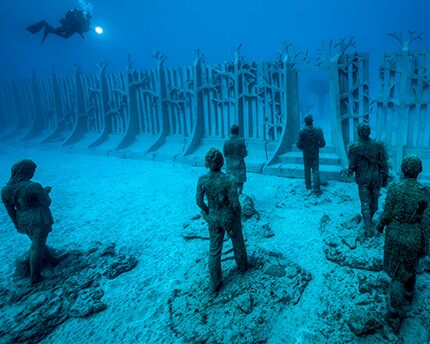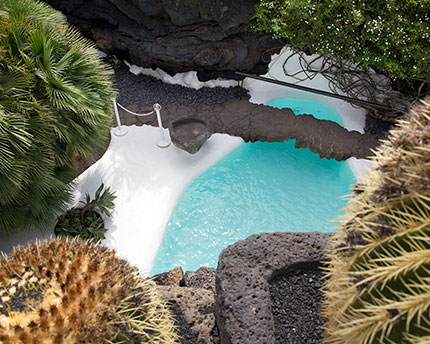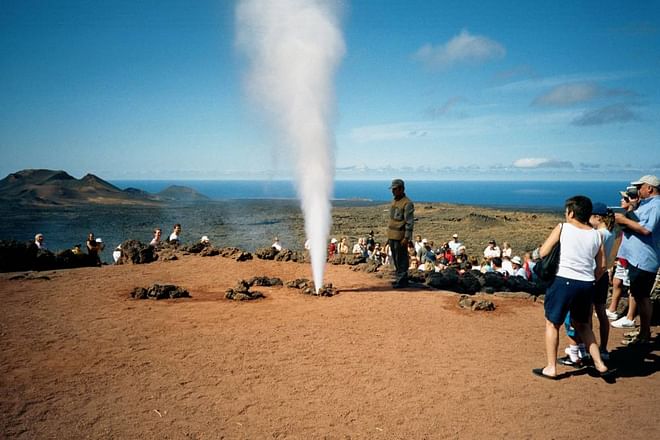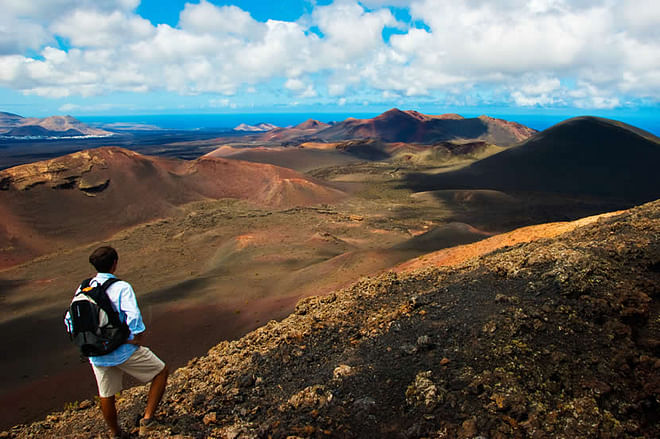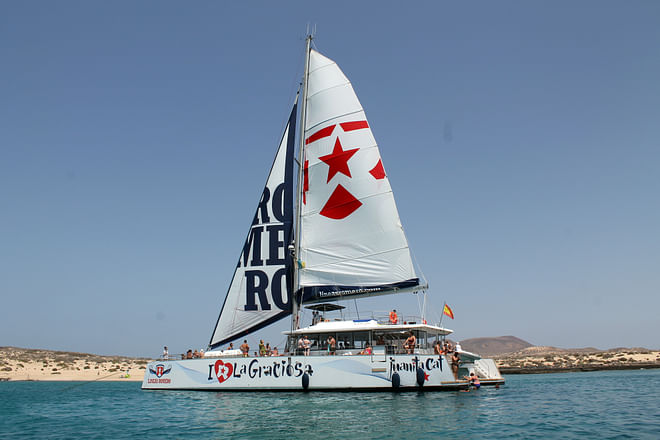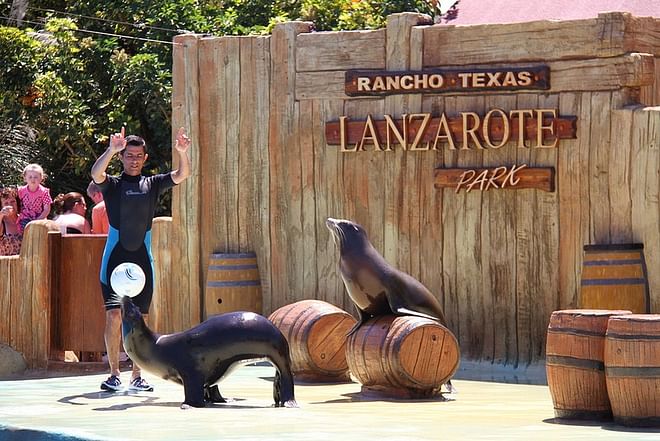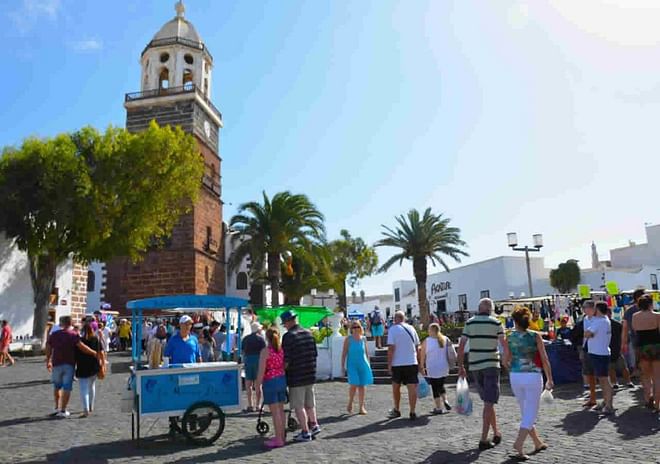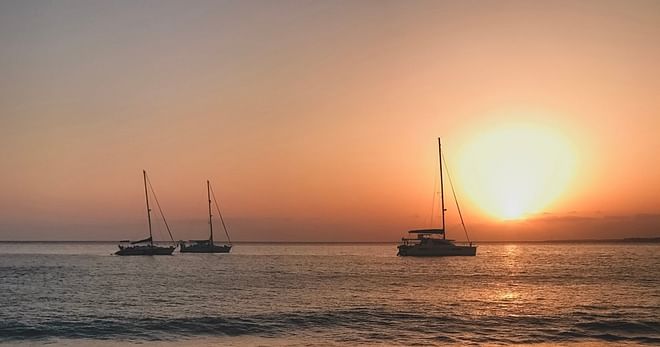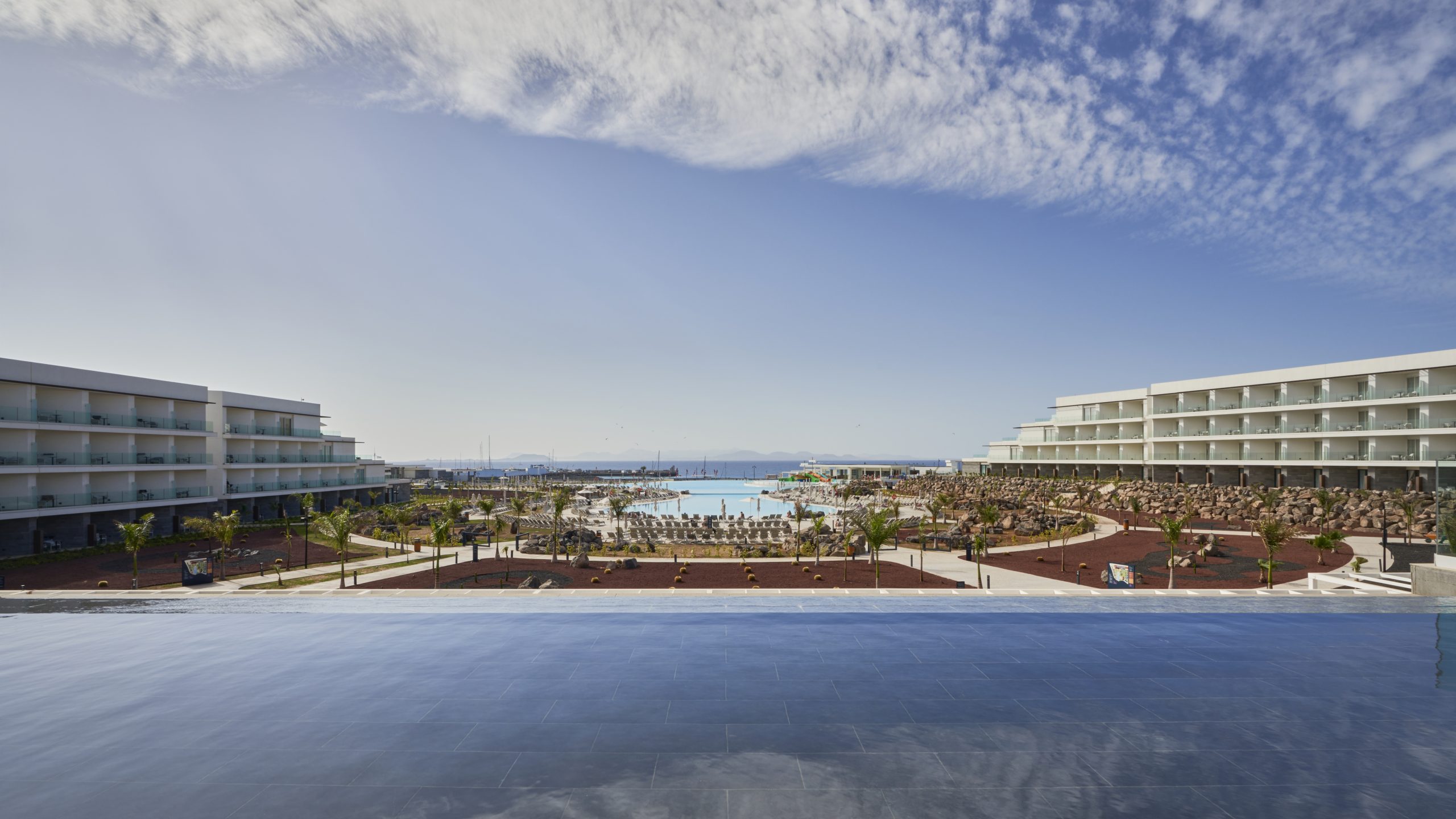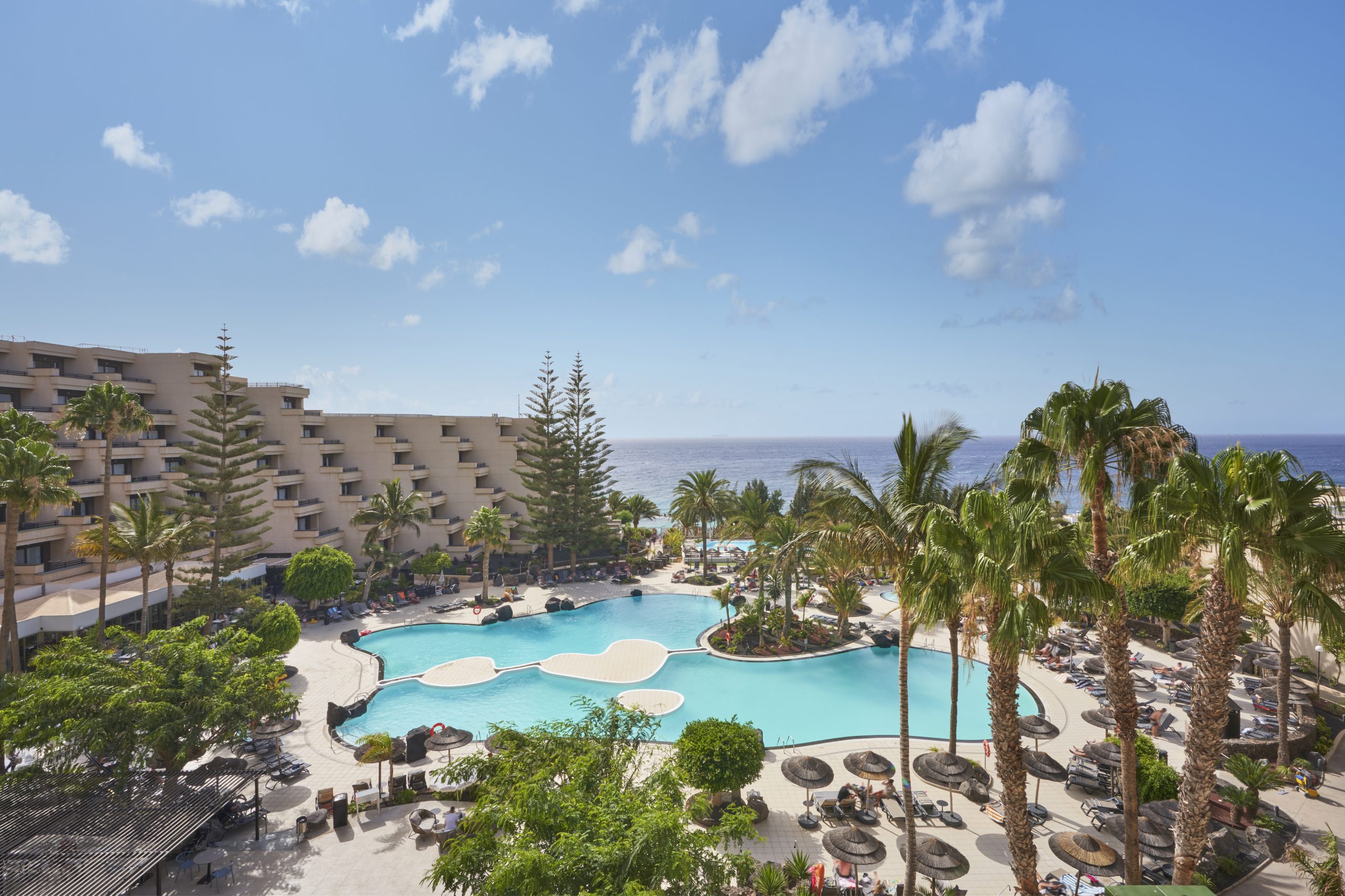César Manrique’s final work in Lanzarote could be described as a genuine cactus museum, as it houses a huge variety of cactus family specimens. Only a creative genius such as that of the Lanzarote artist could come up with the idea of establishing a green oasis in this relatively poor environment, which until then had functioned as a rofera, a local term used to denote quarries from which aggregates were extracted.
An attraction frozen in time
The task of creating the Jardín de Cactus was an extremely difficult one—although the idea began to be discussed in the 1960s, the project was not actually completed until 1990. In fact, the 1960s marked a ‘before’ and an ‘after’ in the island’s heritage, as it was in 1966, on his return from a sojourn in New York, that Manrique decided to exploit the uniqueness of Lanzarote’s natural treasures, promoting them through art. His decision would subsequently lead to an opportunity to exploit Lanzarote’s heritage for the development of a tourist industry, and from that moment onwards, ideas began to take shape for iconic works on the island, such as the Jameos del Agua, the El Diablo restaurant, the Monumento al Campesino [Monument to the Farm Worker] and the Mirador del Río Viewing Point.
During those years, César Manrique encouraged the Cabildo de Lanzarote [Island Council] to buy the land that would one day be home to the Jardín de Cactus—located in Guatiza in the municipality of Teguise—to build a wall around it and, finally, to restore the windmill that now dominates the setting. Nevertheless, the work dragged on until enthusiasm was rekindled in the 1980s and the work completed in 1990.
The Jardín de Cactus, a complete work
Manrique’s last artistic installation on the island is now one of Lanzarote’s most popular attractions. The garden houses a collection of around 4,500 specimens of cactus, made up of a total of 450 different species grouped into 13 families. However, the collection is still increasing, as new plants are gradually added from across all the five continents. These include specimens originating from Madagascar, Peru and Tanzania, as well as cactus plants native to the Canary Islands themselves. The remarkable diversity of the collection and, of course, César Manrique’s accomplished design have resulted in the attraction becoming an Asset of Cultural Interest, in the Historic Gardens category. This means that the heritage value and the cultural and natural assets of the site are now fully protected.
As is the case with all his creations, the multifaceted Lanzarote artist undertook in the Jardín de Cactus a holistic work of art, combining very different disciplines such as landscaping, architecture, painting and sculpture, resulting in the creation of a work of unsurpassed beauty. In fact, present-day visitors to the garden find themselves in a place of remarkable beauty and tranquillity, the perfect way to enjoy the power of Nature in Lanzarote.
The outstanding visual features are the green and yellow shades of the cactus plants, and the enormous variety of their shapes and heights, from the tallest, usually swaying slightly in the wind, to the smallest, showing scarcely a few centimetres above the ground. Among them stand several powerful monoliths of volcanic ash, vestiges of the site’s original function. An important element of the scene is the blue sky, which is reflected in the water of the lagoons—home to a number of fish as well as the water lilies which adorn the surface.
The Jardín de Cactus was designed for dramatic effect, as it sets out to deliberately surprise the visitor. This is why entry to the site is via a bend around a central sculpture, placed there with the obvious intention of preventing us from glimpsing the whole scene until the last possible moment. Having negotiated this bend, visitors can enjoy a panoramic view of the garden, and then make their way down the steps to see the vast cactus collection.
The garden is set out like an amphitheatre, with the plants grouped on different terraces connected by small flights of steps. Similarly, there are miniature bridges that allow visitors to cross the lagoons and continue along the paved paths.
Among the most memorable highlights are an impressive 8-metre-tall cactus, the representational sculpture that functions as a fountain, and the entrance, whose doors are decorated on a cactus theme, a motif which appears throughout the entire installation. A humorous note is also struck by the cactus called “mother-in-law’s seat”.
The Jardín de Cactus’s complementary attractions
On the horizon beyond the Jardín de Cactus there looms the silhouette of a millet mill (maize is known as millet throughout the Canary Islands)—one of the last remaining buildings of this type to be conserved on the island. The windmill dates from the early years of the nineteenth century, and was used in the production of gofio [toasted maize flour], a staple ingredient in the region’s cooking. The windmill provides one of the finest panoramas to be seen from the entire site.
Within the amphitheatre, two domed structures command the attention: these house the cafeteria and the Arts, Culture and Tourism Centre shop. In the cafeteria, visitors can try some of the area’s traditional dishes, such as papas arrugadas [‘wrinkled potatoes’], Canary Island octopus or a cactus burger. Rather than dismissing the cafeteria as just an ancillary space and therefore disregarding its décor, it is also worth lingering over some of its features, which are unmistakeably linked to the plant theme. The same can be said of the garden shop where (inevitably) visitors can buy cactus plants, as well as pieces created by local craftsmen and natural cosmetic products.





























































